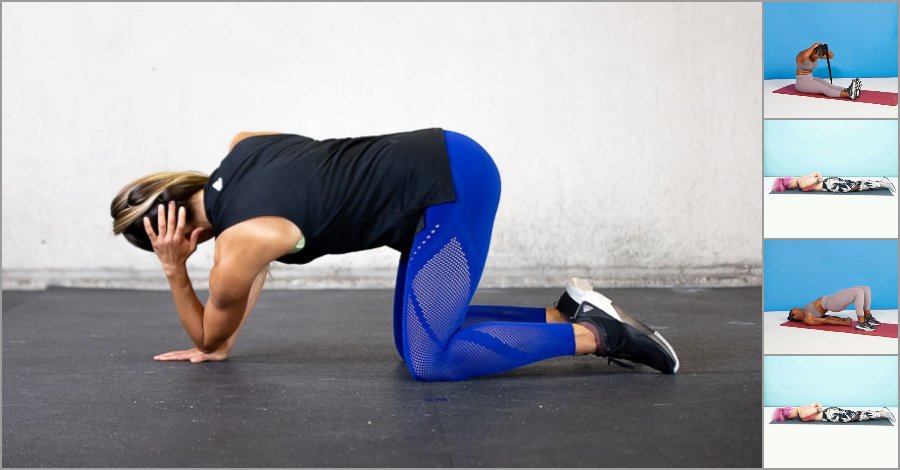Before you can work on alleviating that tightness, you first should understand what might be causing that neck discomfort. While we may think of neck stretches as something you just hold, mobility-based moves also play a super-important role. They help your body take the proper posture you learn during static stretches and apply it to movement.
We’ve all felt that annoying tightness or discomfort in our necks after a night of poor sleep or a day hunched over a screen. Neck stretches are the way to fix that…right? Not exactly. If you want a long-term solution to neck stiffness or discomfort and a preventive way to stop it from happening in the first place, you have to focus on more than just your neck.
The muscles in the neck and the shoulders become overworked, making them feel tense and your tightness feel worse. If you’re dealing with neck tightness or stiffness, working on sitting and standing in an aligned posture and breathing diaphragmatically are key. But stretching plays an important role after that.
The Workout:
Hold each static stretch for at least 30 seconds, or 5-8 deep, diaphragmatic breaths in and out, and the dynamic moves for the time specified.
Seated Clasped Neck Stretch:

How to:
- Sit comfortably on the floor or in a chair, making sure your body is in proper alignment (your head should be stacked above your ribs and your ribs above your pelvis).
- Clasp your hands and bring both palms to the back of your head.
- Gently press your hands down toward your thighs, tucking your chin into your chest.
- Hold for at least 30 seconds, or 5-8 deep, diaphragmatic breaths in and out.
Upper Trapezius Stretch:

How to:
- Start standing or sitting tall, and place one hand on your lower back, the other hand on the opposite side of your head.
- Pull your head toward your shoulder, looking straight ahead, until you feel a stretch in your neck.
- Hold for at least 30 seconds (or 5-8 deep, diaphragmatic breaths).
- Repeat on the other side.
Bridge:

How to:
- Lie faceup on the floor or a mat, your knees bent, and feet hip-width apart.
- With your palms and feet pressing firmly into the ground, lift your hips off the floor.
- Clasp your hands together below your pelvis, extending through your arms.
- Engage your core so your lower back presses against the floor.
- Hold for two full diaphragmatic breaths cycles (deep inhales in, deep exhales out).
Behind the Back Drill:

How to:
- Lie facedown. Place both palms down on the back of your head.
- Your elbows should be pointed out to the sides.
- Extend your arms in the shape of the letter Y.
- Reach your arms as wide as you can and circle them down to the sides of your body with palms down.
- As soon as you can no longer keep your palms down, flip your hands over to palms up and bring your hands to the center of your lower back.
- Pause at your low back for 2 seconds.
- Circle your arms back in the reverse direction to return to starting position, holding your hands at your head for 2 seconds.
- Continue for at least 30 seconds.
Banded Pull-Aparts:

How to:
- Stand with your feet hip-width apart. Hold one end of a resistance band in each hand.
- Raise your straight arms to shoulder height, palms down, with your hands about six inches apart.
- The band should have a small amount of tension, but not be taut.
- Now pull the band apart, extending your arms wide to each side until your upper body is in a T position, keeping your hands at the same height.
- Pause for 2 seconds when the band is fully extended.
- Return your arms to the center.
- Continue for at least 30 seconds.

